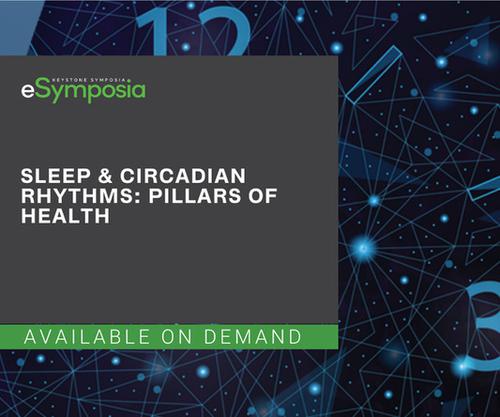当前位置:
X-MOL 学术
›
Ann. N. Y. Acad. Sci.
›
论文详情
Our official English website, www.x-mol.net, welcomes your feedback! (Note: you will need to create a separate account there.)
Sleep and circadian rhythms: pillars of health—a Keystone Symposia report
Annals of the New York Academy of Sciences ( IF 5.2 ) Pub Date : 2021-08-02 , DOI: 10.1111/nyas.14661 Jennifer Cable 1 , Eva Schernhammer 2, 3 , Erin C Hanlon 4 , Céline Vetter 5, 6 , Jonathan Cedernaes 7 , Nour Makarem 8 , Hassan S Dashti 5, 9 , Ari Shechter 10 , Christopher Depner 11 , Ashley Ingiosi 12 , Christine Blume 13 , Xiao Tan 14, 15 , Elie Gottlieb 16 , Christian Benedict 14 , Eve Van Cauter 4 , Marie-Pierre St-Onge 17
Annals of the New York Academy of Sciences ( IF 5.2 ) Pub Date : 2021-08-02 , DOI: 10.1111/nyas.14661 Jennifer Cable 1 , Eva Schernhammer 2, 3 , Erin C Hanlon 4 , Céline Vetter 5, 6 , Jonathan Cedernaes 7 , Nour Makarem 8 , Hassan S Dashti 5, 9 , Ari Shechter 10 , Christopher Depner 11 , Ashley Ingiosi 12 , Christine Blume 13 , Xiao Tan 14, 15 , Elie Gottlieb 16 , Christian Benedict 14 , Eve Van Cauter 4 , Marie-Pierre St-Onge 17
Affiliation

|
The human circadian system consists of the master clock in the suprachiasmatic nuclei of the hypothalamus as well as in peripheral molecular clocks located in organs throughout the body. This system plays a major role in the temporal organization of biological and physiological processes, such as body temperature, blood pressure, hormone secretion, gene expression, and immune functions, which all manifest consistent diurnal patterns. Many facets of modern life, such as work schedules, travel, and social activities, can lead to sleep/wake and eating schedules that are misaligned relative to the biological clock. This misalignment can disrupt and impair physiological and psychological parameters that may ultimately put people at higher risk for chronic diseases like cancer, cardiovascular disease, and other metabolic disorders. Understanding the mechanisms that regulate sleep circadian rhythms may ultimately lead to insights on behavioral interventions that can lower the risk of these diseases. On February 25, 2021, experts in sleep, circadian rhythms, and chronobiology met virtually for the Keystone eSymposium “Sleep & Circadian Rhythms: Pillars of Health” to discuss the latest research for understanding the bidirectional relationships between sleep, circadian rhythms, and health and disease.
中文翻译:

睡眠和昼夜节律:健康的支柱——Keystone 研讨会报告
人类昼夜节律系统由下丘脑视交叉上核中的主时钟以及位于全身器官中的外周分子钟组成。该系统在生物和生理过程的时间组织中起着重要作用,例如体温、血压、激素分泌、基因表达和免疫功能,它们都表现出一致的昼夜模式。现代生活的许多方面,例如工作安排、旅行和社交活动,都可能导致睡眠/起床和饮食安排与生物钟不一致。这种错位会破坏和损害生理和心理参数,最终可能使人们患上癌症、心血管疾病和其他代谢紊乱等慢性疾病的风险更高。了解调节睡眠昼夜节律的机制可能最终会导致对可以降低这些疾病风险的行为干预的见解。2021 年 2 月 25 日,睡眠、昼夜节律和时间生物学专家在 Keystone eSymposium“睡眠与昼夜节律:健康支柱”虚拟会议上讨论了最新研究,以了解睡眠、昼夜节律和健康之间的双向关系疾病。
更新日期:2021-08-02
中文翻译:

睡眠和昼夜节律:健康的支柱——Keystone 研讨会报告
人类昼夜节律系统由下丘脑视交叉上核中的主时钟以及位于全身器官中的外周分子钟组成。该系统在生物和生理过程的时间组织中起着重要作用,例如体温、血压、激素分泌、基因表达和免疫功能,它们都表现出一致的昼夜模式。现代生活的许多方面,例如工作安排、旅行和社交活动,都可能导致睡眠/起床和饮食安排与生物钟不一致。这种错位会破坏和损害生理和心理参数,最终可能使人们患上癌症、心血管疾病和其他代谢紊乱等慢性疾病的风险更高。了解调节睡眠昼夜节律的机制可能最终会导致对可以降低这些疾病风险的行为干预的见解。2021 年 2 月 25 日,睡眠、昼夜节律和时间生物学专家在 Keystone eSymposium“睡眠与昼夜节律:健康支柱”虚拟会议上讨论了最新研究,以了解睡眠、昼夜节律和健康之间的双向关系疾病。


























 京公网安备 11010802027423号
京公网安备 11010802027423号